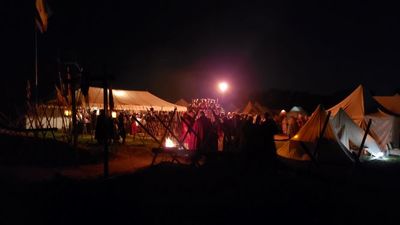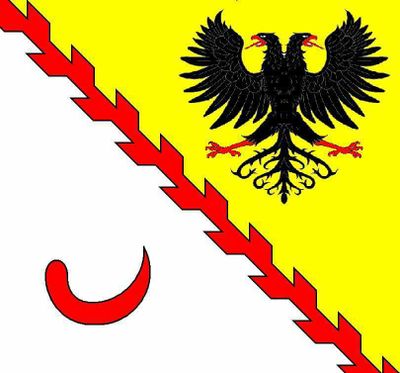No edit summary |
No edit summary |
||
| Line 1: | Line 1: | ||
{{Households|photo=[[Image:Lanndsknecht_Encampment.jpg|400px]]|photocaption=Eberhauer Landsknecht Encampment|founded=1997|status=Active |device= [[Image:22008130_10209927079437111_8928608104569795615_n.jpg |400px]] |devicecaption=Per bend Or and argent, a bend raguly gules between a double-headed eagle sable and an elephant's tusk gules | artist = Unknown}} | {{Households|photo=[[Image:Lanndsknecht_Encampment.jpg|400px]]|photocaption=Eberhauer Landsknecht Encampment|founded=1997|status=Active |device= [[Image:22008130_10209927079437111_8928608104569795615_n.jpg |400px]] |devicecaption=Per bend Or and argent, a bend raguly gules between a double-headed eagle sable and an elephant's tusk gules | artist = Unknown}} | ||
==What's in a name?== | ==<ref>https://en.wikipedia.org/wiki/Landsknecht</ref>What's in a name?== | ||
The Landsknechte (also rendered as Landsknechts; singular: Landsknecht, pronounced [ˈlantsknɛçt]) were German-speaking mercenaries used in pike and shot formations during the early modern period. Consisting predominantly of pikemen and supporting foot soldiers, their front line was formed by Doppelsöldner ("double-pay men") renowned for their use of arquebus and Zweihänder. They formed the bulk of the Holy Roman Empire's Imperial Army from the late 1400s to the early 1600s. | The Landsknechte (also rendered as Landsknechts; singular: Landsknecht, pronounced [ˈlantsknɛçt]) were German-speaking mercenaries used in pike and shot formations during the early modern period. Consisting predominantly of pikemen and supporting foot soldiers, their front line was formed by Doppelsöldner ("double-pay men") renowned for their use of arquebus and Zweihänder. They formed the bulk of the Holy Roman Empire's Imperial Army from the late 1400s to the early 1600s. | ||
Latest revision as of 13:05, 10 January 2021
| Photo | ||||
|---|---|---|---|---|
 Eberhauer Landsknecht Encampment | ||||
| Information | ||||
| ||||
| Heraldry | ||||
 Per bend Or and argent, a bend raguly gules between a double-headed eagle sable and an elephant's tusk gules |
[1]What's in a name?
The Landsknechte (also rendered as Landsknechts; singular: Landsknecht, pronounced [ˈlantsknɛçt]) were German-speaking mercenaries used in pike and shot formations during the early modern period. Consisting predominantly of pikemen and supporting foot soldiers, their front line was formed by Doppelsöldner ("double-pay men") renowned for their use of arquebus and Zweihänder. They formed the bulk of the Holy Roman Empire's Imperial Army from the late 1400s to the early 1600s.
Locations
Originally formed in 1987 in the Barony of Tir Ysgithr Now spread though-out Atenveldt and other kingdoms.
Order of Precedence
Eberhauer Landsknecht Order of Precedence.
Members
Unit Structure
A. Officer
Membership
A. Paid Member: A paid member is anybody approved to be a member that has paid there annual dues in full. Paid members will have the right to cast one vote for Hauptmann at elections and will get an opinion in all other activities and decision of the unit.
B. Non-paid member: A non paid member is anybody approved to be a member that has not paid there annual dues in full. Non paid members do not get a vote for Hauptmann and have no say in any decisions of the unit.
History
Former Hauptmann's
Social Media
Facebook: Eberhauer Landsknecht Facebook.